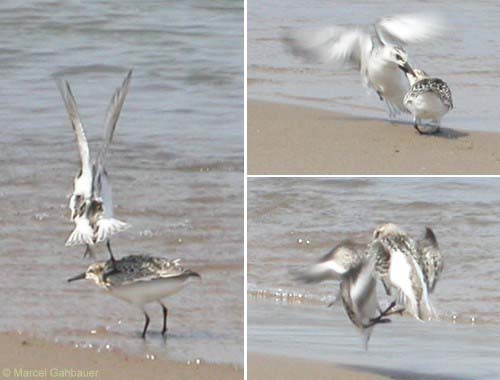Hotspots
Where Are the Birds?
Wondering where interesting birds have been seen lately? Check out Toronto and Southern Ontario Birding for recent sightings.
Where Should We Go?
Visiting? Limited time?
“The best time to arrive would be May 7–14...Upon arriving in Toronto with half a day ... head east to the Pickering marshes ... with no car ... go to Toronto Island. A visitor with 2–7 days should begin at Point Pelee and head east along Lake Erie. Don’t forget Algonquin Park in your week. A late fall visit of 1–2 days should include a drive down to Niagara for water birds.”
From Intro to Ontario by Linda and Chip Weseloh in A Bird–finding Guide to Canada by J. C. Finlay, 1983.
In winter, consider visiting:
- The Niagara river for gulls.
- Western Lake Ontario (many parks from Hamilton to Humber Bay East in Toronto) for waterfowl.
- Algonquin Park for boreal species.
- Less time or no car? Lake Ontario sites in the city such as Toronto Island, Ashbridge’s Bay, or the Leslie St Spit, for gulls and waterfowl.
Spring:
- Beamer Point hawkwatch.
- All hotspots for landbird migrants, especially lakeshore sites, such as Thickson’s Woods, Second Marsh, the Leslie St. Spit, but also parks and ravines that lead north from the lake such as High Park, Humber, Don, and Rouge river valleys.
Summer:
- Both the latest migrants in June and the earliest southbound migrants in July, shorebirds, and the places they congregate are the main attraction for birders before landbirds start moving south in August. Consider the Lake Erie shoreline between Fort Erie and Rock Point Provincial Park, or Pringle Creek in Whitby for shorebirds.
Fall:
- Hawkwatches – see our pages under Projects.
- Otherwise mostly same as spring.
Using the Map
Click on the link to the Hotspots Map at the top of the page to try out the Google Map there. If you click on a marker you will see a link to “More information ...”. This will load the Descriptions page and move you to the right place. Try all the controls on the map. You can click and drag on the map to reposition it. Double clicking on the map surface zooms in on the spot clicked (unless you click on a marker).
The check boxes at the bottom show and hide markers. The page opens with Features Within a Site (Yellow) not shown since they only make sense when you have zoomed in.
The centre box at the top left – with 4 arrows inside it – brings you back to the initial map state.
Feature markers are for reference and do not show anything when clicked.
Try the Satellite or Hybrid views which are especially useful to see site details that are not mapped.
Contributors
Hugh Currie has supplied much useful annotation of the hotspots in the Descriptions Page - many of the annotations are his.
We have had input also from Marg Catto and Pat Hodgson. Bob Yukich did the Guide to High Park. John Carley provided the entry for The Spit – Tommy Thompson Park. John Stirrat and Rayfield Pye updated the entires for Durham. Bob Kortright has taken on the task of organising the descriptions and suppling missing material or arranging for others to do so.
We need additional input for spots which are on the maps but which lack description and for spots not on the maps which seem useful to add. You will see the on the map and in the description page. We need lots of help on this one!
|
Could anyone who can supply description text please with the content attached and we will update the site. |
|
Please with sites that you think should be added. |
